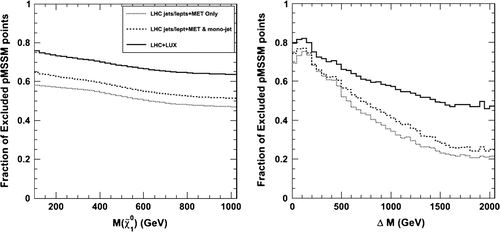Figures & data
Figure 1. Schematic representation of monojet channels in the effective or simplified models (left panel) and additional diagrams in the MSSM with neutralino dark matter (right panel).

Figure 2. Monojet production cross section as a function of the neutralino mass, in the case where only neutralino LSPs are considered in the monojet final states (left panel), and in the case with squarks and gluinos decaying to soft jets and neutralinos (right panel), for the LHC 14 TeV run with 300 fb. The blue points satisfy the monojet constraints, while the red points are excluded at 95% C.L.
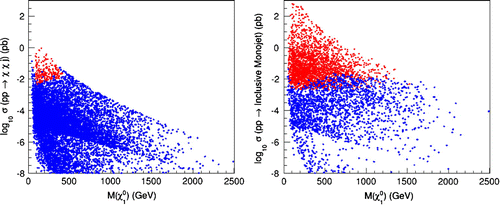
Figure 3. Fraction of excluded points by the SUSY searches (solid lines) in addition to the monojet searches (dotted lines), as a function of the lightest squark mass (left panel) and of the gluino mass (right panel).
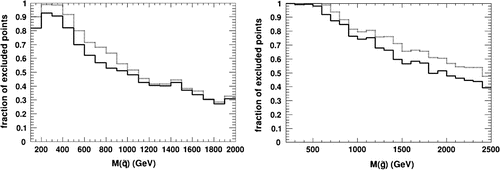
Figure 4. Fraction of excluded points in the lightest squark/gluino vs. neutralino mass plane (left panel) and the lightest squark/gluino mass splitting with the neutralino vs. neutralino mass plane (right panel). Notes: The grey zones correspond to regions where no valid pMSSM point is found. The grey line delimits the region where 99% of the points are excluded by the SUSY searches only, and the yellow line the region where the points are excluded by the combination of the SUSY and monojet searches (Arbey et al., Citation2014).
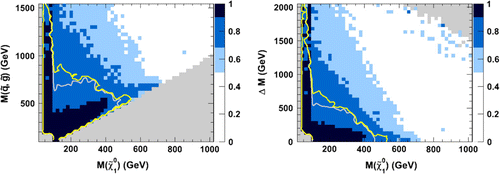
Figure 5. pMSSM points in agreement with the Higgs measurements projected on the (left panel) and
(right panel) parameter planes. Notes: The black points are in agreement with the Higgs mass and
constraints. The dark and light green points are compatible at 68% and 95% C.L. with the additional
signal strength measurements, respectively (Arbey et al., Citation2012b).
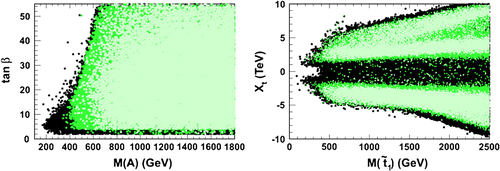
Figure 6. Fraction of excluded points (blue scale) by the heavy Higgs searches for the 8 TeV run (left panel) and extrapolations for the 14 TeV run (right panel). Notes: The lines delimit the excluded regions from different heavy Higgs search channels (Arbey, Battaglia, & Mahmoudi, Citation2013b).

Figure 7. Constraints from BR() in the
(left panel) and
(right panel) parameter planes. Notes: The black points correspond to the valid pMSSM points, the grey points are also compatible with the Higgs mass constraints. The dark green points are in agreement at 95% C.L. with the current BR(
) constraints, and the light green points show the projection for the ultimate LHCb constraints from BR(
). For comparison, the solid line in the left panel shows exclusion limits by Higgs searches for
(Arbey, Battaglia, Mahmoudi, & Martinez Santos, Citation2013).

Figure 8. Relic density as a function of the lightest neutralino mass. Notes: The colours of the points correspond to the neutralino types. The black line gives the central value of the observed dark matter density.
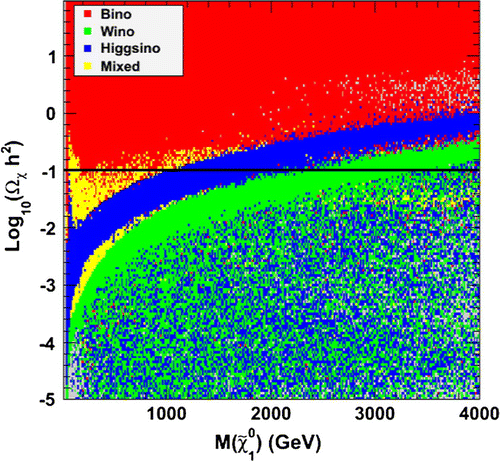
Figure 9. Spin-independent scattering cross section of neutralinos with protons as a function of the lightest neutralino mass. The colour of the points denotes the dominant nature of the lightest neutralino. Notes: The solid lines show the latest XENON and LUX limits, the dashed line represents the prospective LZ limit and the dotted line represents the limit below which neutrinos will act as a large background for the dark matter searches.
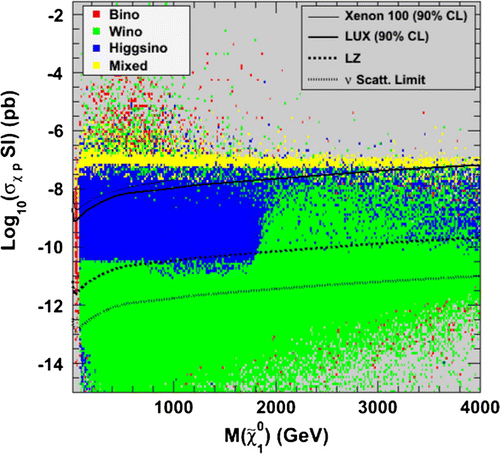
Figure 10. Constraints from the LUX experiment in the parameter plane. Notes: The black points are excluded by the LUX limits, while the green points are allowed.
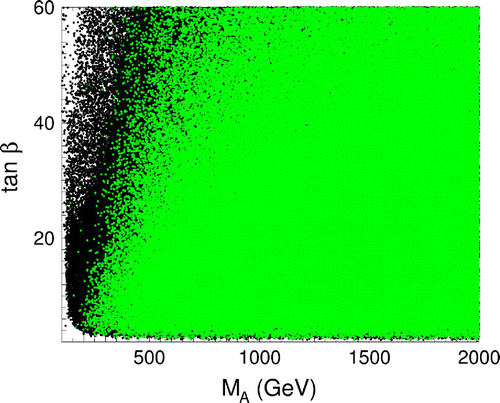
Figure 11. Fraction of pMSSM points excluded by the SUSY direct searches (left panel), in addition to the monojet searches (right panel), in the neutralino–proton scattering cross section vs. neutralino mass. Notes: The lines show the XENON-100 and LUX dark matter direct detection limits (Arbey et al., Citation2014).
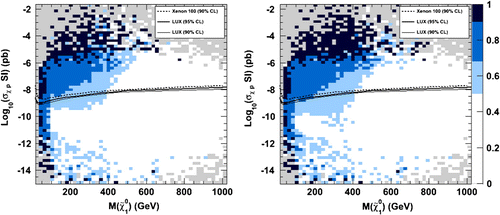
Figure 12. Fraction of pMSSM points excluded by the SUSY direct searches, monojet searches and LUX data as a function of neutralino mass (left panel) and mass splitting between the lightest squark or gluino and the lightest neutralino (right panel).
